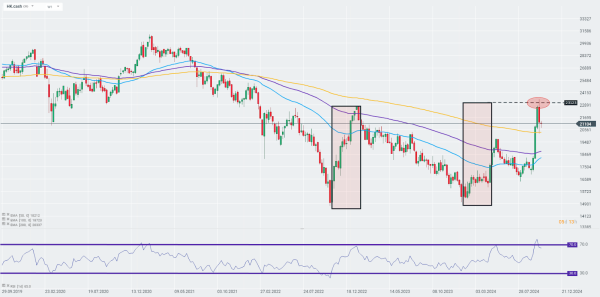Chart of the day: HKcash (14.10.2024)
Chinese stocks, at least for now, are not losing hope for new economic stimulus packages. Even so, optimism and soaring growth have slowed somewhat since last week. At a press conference on Saturday, China gave few details about new stimulus to the economy, which was a slight disappointment. Still, the financial regulator says it will lower financing costs for small and medium-sized enterprises, which should support the world's key economy in the long term.
On the other hand, however, the Chinese CPI reading we learned yesterday pointed to further economic problems in China. The reading for September came in at 0.4% y/y vs. the expected 0.8% y/y and the last reading of 0.6%, indicating that the local consumer still has no need to overindulge in consumption savings. What's worse, however, is that the data already corroborates the more macro-level data on the foreign trade balance, which also turned out to be a disappointment. In September, exports (i.e., the view of world demand) grew by 2.4% against the expected 6% and the previous reading of 8.7%. Imports, on the other hand (a view of Chinese demand) were 0.3% versus the expected 0.8% and the previous reading of 0.5%.
At this point, the Hang Seng is losing ground slightly, erasing the moderate gains from the beginning of the session. HKcash retested the peak set by the 1:1 structure of the upward technical rebound we saw in the market at the end of October 2022 (peaking in January 2023). A move of the same magnitude now ended at the upper limit set by the same range (23,123; 8300 pips). The key now seems to be whether HKcash will manage to stay above the 200-week exponential moving average (gold curve) and break out above the earlier peak level. It is in the medium term that reactions to these zones may determine the future trends seen on the index.

Source: xStation 5